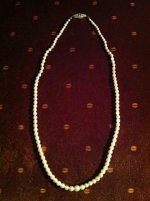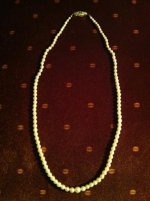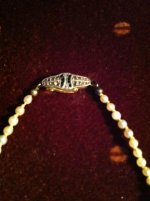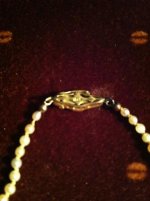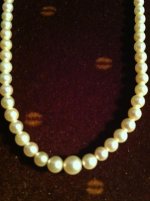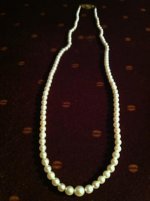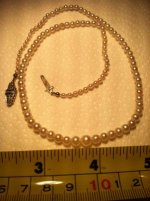I was going through my old jewelry box and came across an old string of pearls that were given to me twenty years ago. The story goes that they are natural pearls, given to my great-grandmother by my great-grandfather back in Germany likely before WWII. The back of the clasp says 18 ct. I can see no other stamps on it. There are what appear to be very small diamonds and sapphires in it. Some of the diamonds look like they're uncut diamond "chips." They are knotted and the largest pearl is 6 mm (I'm pretty sure, eyes aren't that great anymore). I counted 109 pearls in total, again eyesight permitting  Does anyone know what these might be worth? I'm thinking of having them appraised by the GIA. Thanks so much!
Does anyone know what these might be worth? I'm thinking of having them appraised by the GIA. Thanks so much!
My Great Grandmother's Pearls
- Thread starter dolphin1
- Start date

